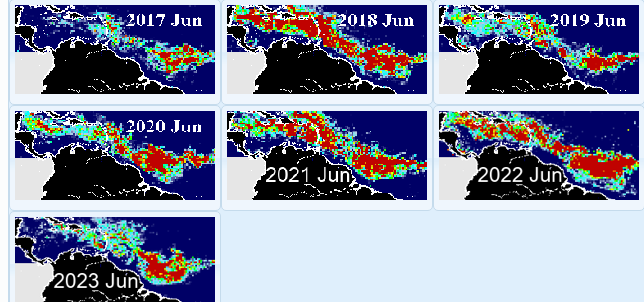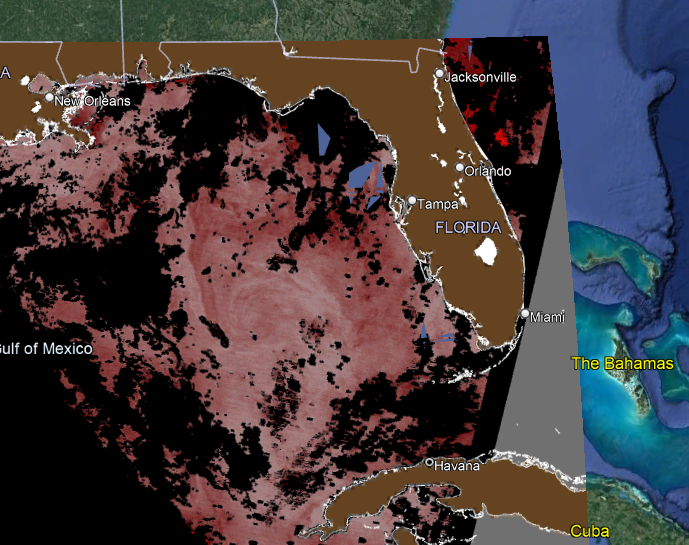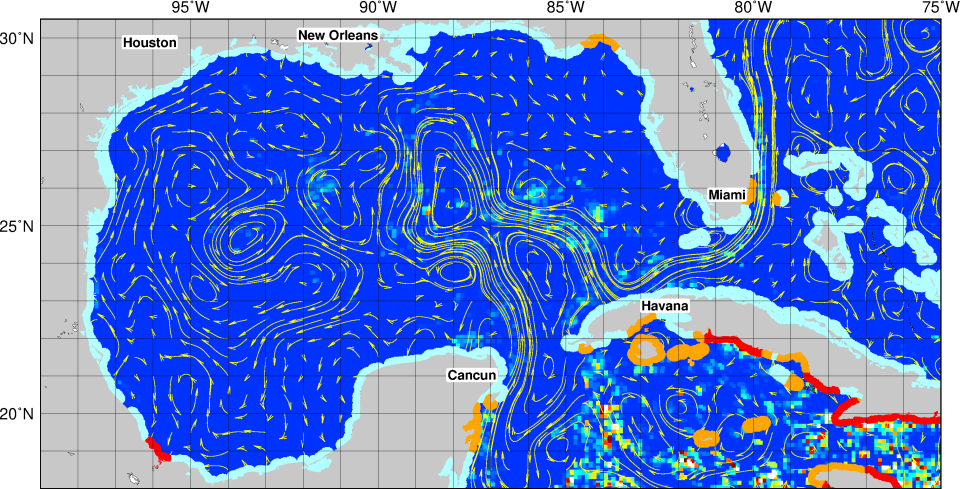Sargassum drop 'beyond expectation' in Gulf of Mexico, Caribbean. Where will it be in July?
The amount of sargassum in the Gulf of Mexico not only decreased in June, but the drop exceeded expectations, according to the June report from the University of South Florida.
The trend of decreasing amounts of sargassum being reported is expected to continue over the next two to three months, which should be good news to Florida residents and visitors.
As predicted a month ago, sargassum amounts in the Gulf of Mexico decreased in June 2023, but the magnitude of the 75 percent decrease is beyond expectation, researchers said.
However, sargassum did increase in the central western Atlantic.
How much sargassum is out there?

By the end of June, there was very little sargassum in both the Gulf of Mexico and western Caribbean Sea, which was expected to be good news for many coastal residents.
Very little sargassum was found by the end of June in the Straits of Florida and along the east coast of Florida, according to the University of South Florida..
Overall, the amount of sargassum quantity in the Great Atlantic Sargassum Belt, which extends from west Africa to the Gulf of Mexico, in June decreased slightly from May.
The decrease was attributed to substantial decreases of the seaweed in the Gulf of Mexico and Caribbean Sea.
Sargassum increased in the Central West Atlantic.
In the Caribbean Sea, most sargassum was located around the Lesser Antilles and along the southern coasts ofHispanola, Jamaica and Puerto Rico.
Minimal sargassum was found in the western Caribbean, including waters along the Mexico’s Caribbean coast.
How much sargassum can be expected in July?

Because of the continued decreases of sargassum in the Gulf of Mexico and Caribbean Sea, and because theincreases in the central west Atlantic appear to have slowed down, researchers predict the sargassum amount in theGulf of Mexico will remain minimal.
Sargassum in the Caribbean should either either decrease or remain stable.
Where is it going?
Sargassum aggregations in the central west Atlantic continue to move west with prevailing currentsand winds.
Looking further ahead, where can we expect sargassum in Florida and elsewhere?

The trend of decreasing amounts of sargassum being reported is expected to continue over the next two to three months, which should be good news to residents living in the Florida Keys and along the east coast of Florida, as well as in the west coast of the Caribbean Sea, according to the University of South Florida.
Sargassum reaching beaches is predicted to continue throughout some of the eastern Caribbean and possibly western Caribbean, although it is difficult to predict exact timing and location for individual beaching events.
Coastal risk areas around Florida for sargassum are low with two exceptions, according the National Oceanic and Atmospheric Administration
A portion of the Big Bend and around Miami show coastal risk levels at medium, according a report from the National Oceanic and Atmospheric Administration that examined beach conditions from June 27 through July 3.
See conditions at Florida beaches using these webcams
Planning to spend some time at the beach but want to check out the latest conditions? Here are several webcams around the state.
Beach webcams: Florida beach live webcams show surf, waves, sargassum seaweed conditions
See conditions at Florida beaches: Florida beach live webcams show surf, waves, sargassum seaweed conditions
What exactly is sargassum?
Sargassum is a brown seaweed that floats in the ocean and currently is washing up on many Florida beaches in large amounts.
Is sargassum dangerous for people?
On land, sargassum begins to rot and produces hydrogen sulfide and ammonia.
Hydrogen sulfide can irritate the eyes, nose and throat. If you have asthma or other breathing illnesses, you will be more sensitive to hydrogen sulfide. You may have trouble breathing after you inhale it, according to the Florida Department of Health.
Tiny organisms that live in seaweed, such as jellyfish larvae, may irritate the skin if you come into contact with it.
Can you cook or eat the seaweed?
No. The Florida Department of Health warned the seaweed could contain large amounts of such heavy metals as arsenic and cadmium.
Read the full June sargassum report
This article originally appeared on Florida Today: Sargassum snapshot: June amount, locations and what to expect in July

